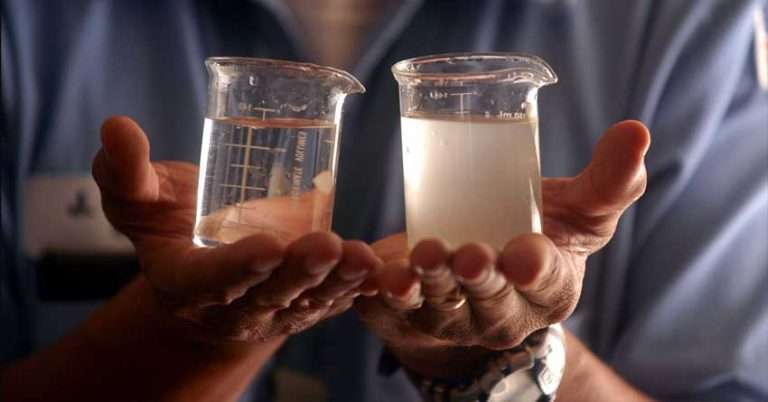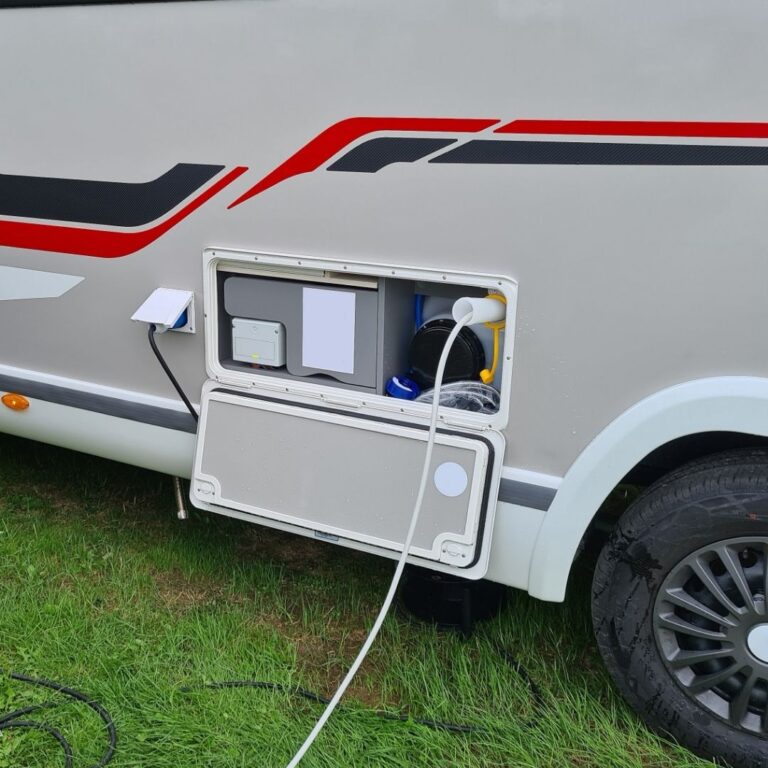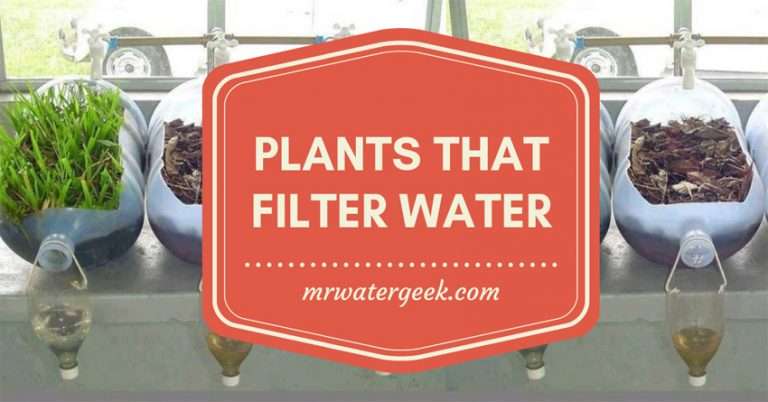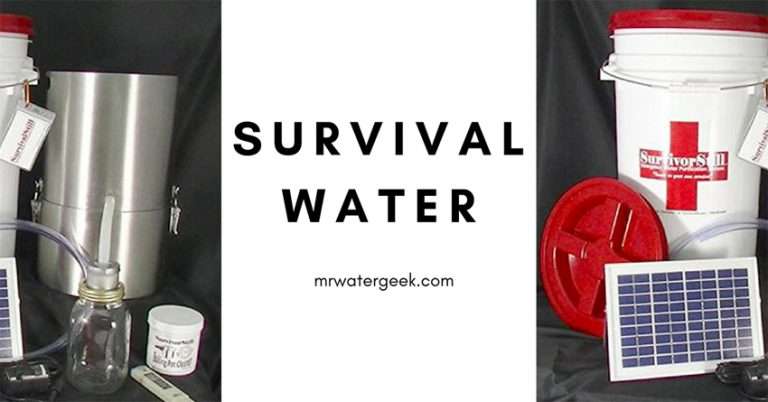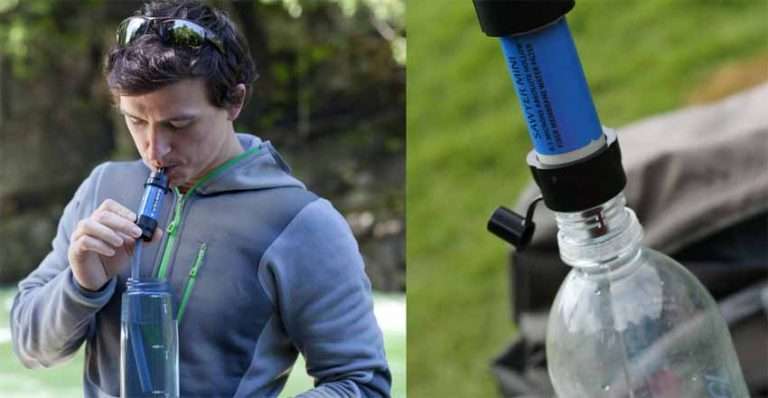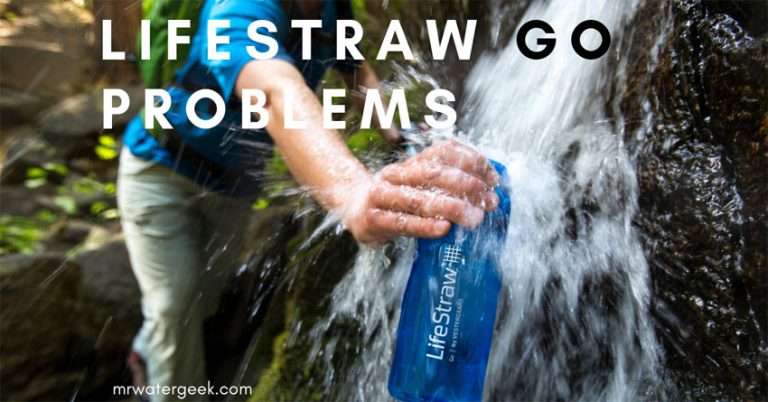9 FOOLPROOF Survival Water Purification and Why They’re BAD
 Why All Survival Water Purification Methods are BAD…
Why All Survival Water Purification Methods are BAD…
If the quality of the water is a big issue then you must use discretion and consider adding extra precautions. None of these homemade DIY filter methods come with any sort of guarantee. Nor is there any guarantee that these methods will protect you against harmful bacteria and pathogens.
9 Survival Water Purification Methods
Here are the 9 methods that will be covered in this article:
- Water Distillation
- Survival Straws
- Survival Portable Filters
- UV Light Filter
- Solar Power Water Purification / SODIS Water
- Purification Tablets
- Household Chemicals
- Build Your Own Filter
- Boil Your Water
First, Find a Water Source
Before you can purify the water, you must find it. Depending on its location, water can be abundant or practically non-existent.
- You can use water from freshwater sources such as streams, ponds and lakes.
- If you can distill the water, you can even use brackish or salty water as a source.
- Let’s not forget precipitation is an emergency water supply. Rain, snow, sleet, hail, ice and dew are viable water sources.
- The cool rain that did not fall through the jungle or the roof of a forest should be safe enough to drink as is.
- Fresh snow can melt to drink even without processing.
- Water from springs and other underground springs can also be safe in most areas.
Water that comes through trees, such as maple and birch, are fine to drink and plentiful in late winter. But most other water sources must be considered “dirty” and must be disinfected using one of the following methods.
Survival Water Purification Method 1:
Water Distillation
Lead, salt, heavy metals and many other pollutants can ruin the water supply after a disaster and trying to filter them will only ruin your expensive water filter. 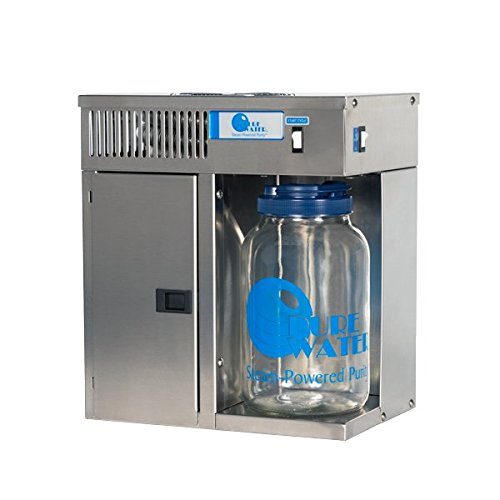
In a scenario where the only water available is dangerous water, the safest solution is the distillation of water. Water can be steam heated, and steam can be trapped to produce relatively clean water, despite its previous forms of contamination.
Distillation does not eliminate all possible contaminants, such as volatile oils and certain organic compounds, but most of the heavy particles remain.
For situations in which catastrophes survive in the home, rapid production of a steam distillation apparatus with a pressure vessel and a small diameter copper tube is possible. The best part of this process (apart from safe water) is that the container remains intact. So you can easily switch from water distillation to food preservation (unless it has to do with radiation). The only difficult part is connecting the copper tube to the steam nozzle on the lid of the can. 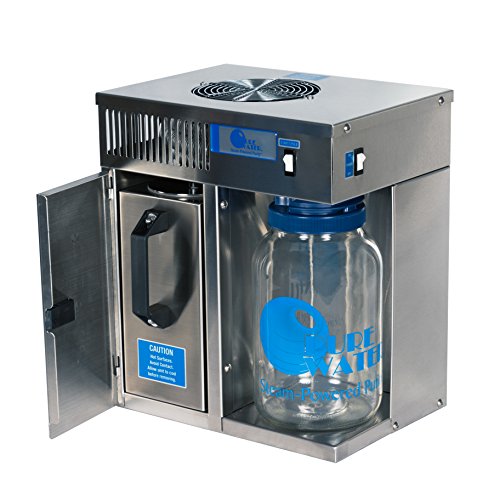
Simple Water Survival Water Distillation
If you are in the field, try your luck with a sunny sun, a simple invention that collects and distills water in a hole in the ground. To build one, place a square of clear or milky plastic (5×5 or 6×6 feet) over a three-foot deep hole with a clean container centered on the floor. (Run without taking a drink tube from the container, so you can drink the frozen water all the distiller apart.) Put the dirt on the edge of the plastic on the edge of the hole in order to seal the jar. Place a stone in the center of the plastic to create a cone of approximately 45 degrees above the container. Dig the silence in a sunny place and on the sand or damp ground. Add green vegetation to the hole to increase water production. A breathable bag is a smaller, less productive version of this device, with a clear plastic bag tied around the living vegetation.
Survival Water Purification Method 2:
Survival Straws
One of the smallest and lightest disinfectants for water that has recently come to market is the water filter straw. The newer models can be used as a drinking straw that automatically filters most type of water that you come across. 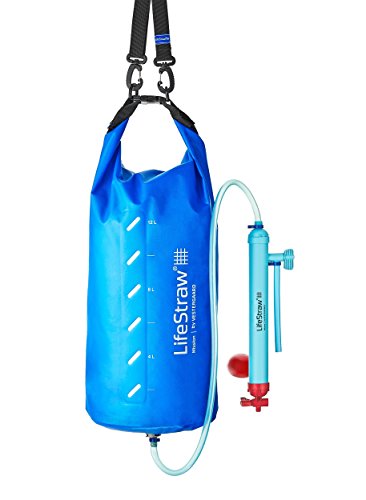
They can also be connected to the drain valve of a water heater to clean water that appears in a water heater after a disaster.
You can also fit in a garden hose to straw filter so it filters the flowing water. But do not expect it to filter out any viruses or bacteria that may grow there, especially a hose in the sun or a warm water heater after a prolonged blackout.
On the plus side, most of these filters contain an activated carbon filter element. They not only filter out the larger bacteria and pathogens, but also remove strange flavors and odors from the water.
Survival Water Purification Method 3:
Survival Portable Filters
The two main types of water filters in use today are pump filters and drip fed/ suction filters. The former uses a pump to push the raw water through a filter cartridge. 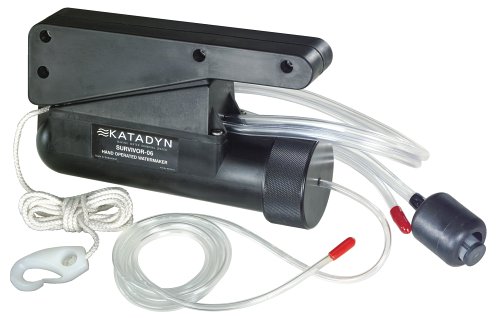
The latter are filter cartridges that have a drip action through gravity. Or they are sometimes are like bladder bags. When it comes in the form of a hydration bladder, the user simply sucks water through the filter when necessary.
My personal favorite (for many years) is the Katadyn pocket filter. It has a ceramic cartridge with silver embedded inside. The ceramic is able to filter larger pathogens and the stainless silver kills or prevents smaller organisms such as viruses. Most filters like these pump about a quarter per minute. If time does not matter, you can opt for a gravity fed system.
Survival Water Purification Method 4:
UV Light Filter
Ultraviolet light is very harmful to small organisms. When used as a disinfectant method, it is surprisingly effective. 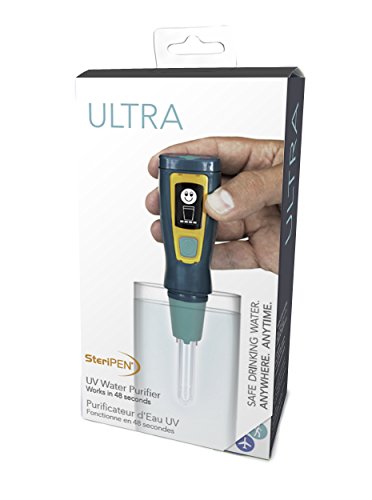 Devices like the Steripen Sidewinder are manual, battery-less water purification devices. They destroy the DNA of pathogenic microbes in seconds. There are also some Steripen products powered by batteries that cause the same virus damage and have been tested all over the world.
Devices like the Steripen Sidewinder are manual, battery-less water purification devices. They destroy the DNA of pathogenic microbes in seconds. There are also some Steripen products powered by batteries that cause the same virus damage and have been tested all over the world.
These are not 100% effective in water with large suspended particles (which can hide pathogens behind or inside). But for clear water of questionable origin, these devices will do the trick.
Survival Water Purification Method 5:
Solar Power Water Purification / SODIS
Solar disinfection of water (SODIS for short) is a method of water treatment that uses solar energy for disinfection.
The most common technique is to expose plastic bottles of contaminated water to the sun for at least a day. The sun’s abundant ultraviolet light kills or damages almost all biological hazards in the water.
The benefits of this type of water treatment are numerous:
![]() It’s easy to use.
It’s easy to use.
![]() Cheap or free.
Cheap or free.
![]() And it offers a good bacterial and viral disinfection (but not complete or guaranteed).
And it offers a good bacterial and viral disinfection (but not complete or guaranteed).
![]() In addition, the process does not use hazardous chemicals and does not require constant attention.
In addition, the process does not use hazardous chemicals and does not require constant attention.
But there are some problems with the method too:
![]() You need sunny weather or two days of cloudy skies for maximum effectiveness.
You need sunny weather or two days of cloudy skies for maximum effectiveness.
![]() Can not use this method in the rain.
Can not use this method in the rain.
![]() Does not provide residual disinfection.
Does not provide residual disinfection.
![]() It may be less effective against bacterial spores and cyst stages of some parasites.
It may be less effective against bacterial spores and cyst stages of some parasites.
![]() The water and the bottle must be relatively clean.
The water and the bottle must be relatively clean.
![]() And the bottle should not be glass.
And the bottle should not be glass.
If that is not bad enough, this method does not help with chemical contamination, and only small bottles (2 liters, maximum) can be processed.
Survival Water Purification Method 6:
Water Purification Tablets
Two of the most common and popular water disinfectant tablets are Katadyn Micropur tablets and Potable Aqua Iodine tablets. Both work very well, but there are some differences. If you have a cabin, a cave or BOB with cleaning tablets in stock, you will want to consider the useful life of the product.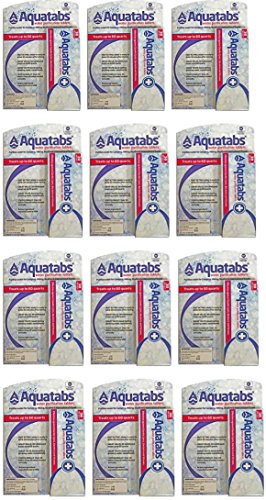
How long to they last?
- Potable Aqua iodine tablets last one year.
- That’s not bad, but Katadyn’s Micropur tablets can last two or more years.
While these two products use different chemicals, both appear to be better than 99 percent against waterborne pathogens.
How long do they take to filter your water?
- Drinking Aqua is the clear winner when it comes to speed. Water treated with these tablets is ready to drink 35 minutes after the start of treatment.
- Micropur tablets take four full hours to reach their maximum disinfecting effect.
What are the side effects?
- The toxicity and taste of iodine can be a bit problematic.
- Iodine tablets are generally not a good option for pregnant women or women with thyroid problems or shellfish allergies.
- Some people on certain medications can not drink water enriched with iodine. This is because combining these tablets with certain drugs can create serious health issues – so check with a doctor first.
The Katadyn product is based on chlorine. Most of which decomposes during the given four-hour waiting period. This means the product tastes much better.
In summary, Katadyn Micropur tablets cost more and take longer to work, but they last longer and taste better. Potable Aqua iodine tablets are cheaper and work faster, but they taste worse and are not stored too long.
Survival Water Purification Method 7:
Household Chemicals
Both bleach and iodine can be used with care to disinfect water with good results. In general, the amount of chemical used depends on the quality and temperature of the water.
How to use bleach and iodine to purify water:
- Cold or cloudy water needs a little more disinfectant (four drops per liter) than warm or transparent water (two drops).
- After adding the chemical, replace the cap on the water container and shake it for one minute.
- Then, turn the bottle upside down and screw the cap one or two turns.
- Let a small amount of water flow to clean the threads and the bottle cap.
- Re-tighten the cap and clean the outside of the bottle to obtain chlorine on all surfaces.
- Place the bottle in a dark place, or at least in the shade.
- Let it sit for 30 minutes when the water is clean and at room temperature.
- If you open the bottle after the given time, you should smell chlorine.
- Otherwise, add one or two more drops and wait another 30 minutes.
- Do not take risks or cut water safety.The last thing you need in an emergency is a waterborne illness.
Make sure you use the right type of iodine in the right dosage:
You can use the two common forms of iodine to disinfect your water.Iodine is a more harmful substance than bleach in most people, but it is an option. To use iodine, it is important to identify its type
- The 2% iodine tincture is actually much stronger than the 10% povidone iodine solution.
- Use 5 to 10 drops of 2% iodine tincture in a liter of water and let it sit in the shade for 30 minutes.
- Rinse the threads again and clean the bottle. Use 5 drops for clear or warm water and up to 10 drops for cold or cloudy water.
- Since the 10% iodopovidone solution is weaker, you need 8 to 16 drops per liter of water.
- Again use less drops for beautiful water and 16 drops for swamp water.
- Clean the bottle and wait.
An additional benefit for iodine products is that they can also be used for wound disinfection. However, do not use bleach any wound. Also, never mix iodine and chlorine for water disinfection.
Survival Water Purification Method 8:
Build Your Own Filter
We all see survival books that show us a DIY water filter DIY water filter filled with carbon from activated charcoal and sand etc. Sorry to burst your bubble, but this is not a reliable system. It will purify the largest particles but do not expect the device to generate water free of bacteria and viruses. 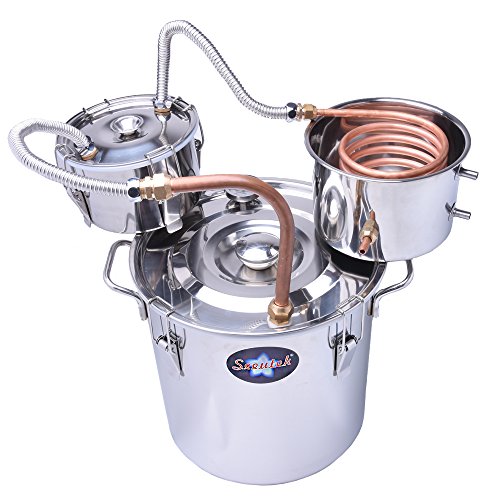
What works, however, is a filter made of a flexible hose, glue and a piece of pine sapwood.
The structure of the sapwood has natural filters in the living wood and protects the air bubbles from the sap of the tree.This type of filter is something that humanitarian workers consider using. It is an ideal solution because it’s easily available material for water filtration devices in developing countries.
Researchers have successfully used a block of 1 cubic inch of pine sapwood as a water filter.
To do this you simply need to connect a piece of wood to the water supply using a PVC pipe. Then add some epoxy resin to prevent water from passing through the wood filter.
In their experiments, flow rates of several quarts per day are possible. It also removes E. coli by 99.9 percent. These are the same numbers that we get with straw water filters. Although wood is till capable of passing viruses (those that are much smaller than bacteria), when it comes to water filtration it’s better than nothing.
Survival Water Purification Method 9:
Boil Your Water
I saved the best and most obvious water purification method for last. Boiling water is a reliable way of killing parasites, bacteria and other pathogens in water. Boiling your water will not vaporize all forms of chemical contamination. 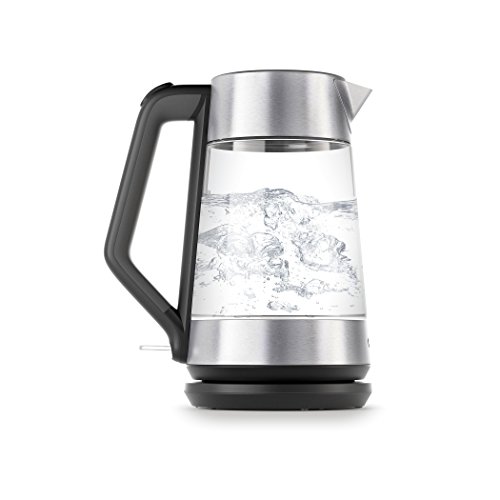 However, it will deal with most common bacteria present in most drinking water. It remains one of the safest methods of disinfection.
However, it will deal with most common bacteria present in most drinking water. It remains one of the safest methods of disinfection.
Five minutes of boiling water will kill most organisms, but ten minutes is safer. Elevations high enough to provide cooking and firing times require a little more time on the flame.
You can boil water over a campfire or oven in a metal, ceramic or glass container. If there is no refractory container, heat the stones in the fire for 30 minutes and place the water container into it.
This container can be a stone sink, a wood bowl, a folded bark container, a skin or an animal stomach. Do not use quartz or rocks, as they may explode when heated.
Survival Water Purification – My Conclusion
Survival water purification is one of the most important camping, hiking and emergency skills.
Water represents more than two thirds of an average person’s body weight. It is an important part of our physiology and even a small amount of dehydration is life-threatening in certain situations.
Unfortunately, not all water sources are equal. Parasites exist in lakes, rivers and streams. This includes bacteria and many other harmful pathogens.
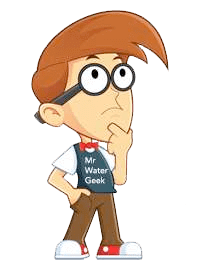
Agricultural and industrial pollutants are unfortunately present in more and more water systems throughout the world. This creates a number of health problems if it continues over a long period of time.
Most people who read this article likely have access to clean and abundant drinking water in the form of faucets and bottled water.But what happens if you are in a situation where you can not depend on them any longer?
If you have even basic knowledge of survival water purification methods then you can find and produce clean, healthy drinking water. You will know how to do this in a variety of disaster scenarios and situations. It can literally save your life.

